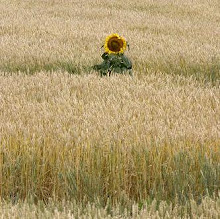January 19, 2010
Recreation || Susan Cooper Eastman
Emersion Therapy
Local blogger charts a three-year journey into the largest park system in America
Duane Smith cruises three times past a cop directing Sunday traffic at First Baptist Church of Mandarin. Driving a vintage 1958 Ford Ranchero, the original “pickup car”, Smith certainly stands out, but the 27 acre Loretto Nature Center seemed to be hiding in plain sight. Though marked on his map at 3900 Loretto Road the park was nowhere to be found.
Like Julia Powell, who spent a year cooking her way through Julia Child’s book “The Art of Mastering French Cooking” (the movie Julia/Julia Project that later became a book and a Meryl Streep Movie), or Morgan Spurlock, who spent a month eating three meals a day at McDonald’s for his film “Super Size Me,” Smith decided in December 2009 to immerse himself in a journey of exploration. After reading online that Jacksonville has the largest park system in the country, the 44 year old set out to visit each one of Jacksonville’s 384 public parks.
As of January 13th, Smith has been to 47, and recorded 46 of those visits on his blog, jaxparx.com. He figures it might take as long as three years to get to every park, but he says he expects to learn plenty from the experience. He’s already discovered a 102 acre preserve on the St. Johns River just 1.3 miles from his Arlington home. (He drove past the Reddi Point Preserve almost daily without knowing its dock was public property.) And he expects to become an outspoken advocate for the park system. Signage is an issue, he says, and the system’s most obvious failing. “If we have the biggest park system in the country, it should be very obvious to people who are driving around the city,” he says. “There should be so many signs that people say, ‘Dang! There’s a lot of parks in Jacksonville!”
Smith doesn’t expect his effort to elicit the reaction that greeted Powell’s blog or Spurlock’s documentary, but he does hope to create a user friendly guide to the city parks and build awareness of these public assets. In some ways Smith is an unlikely missionary for parks and recreation. Though he’s always enjoyed the outdoors – he keeps a pair of plastic lawn chairs bungeed in the bed of his Ranchero for viewing the sunrise in Atlantic Beach each morning, and watches the sunset with his wife from the 36-acre Arlington Lions Club Park – He doesn’t fish, mountain bike, camp, backpack, kayak, canoe or do any of the things one might expect of a typical outdoorsman. For Smith, the outdoors is more of a contemplative, restorative experience. “I just like being outside,” he says.
On his blog, Smith features a picture of each park’s sign along with photos of the park itself, and lists any available information about the parks size, amenities and history. He also writes his general impressions. Friends have suggested he rate the parks, but he hasn’t figured out how to compare a small neighborhood park to one of the city’s large regional facilities. Others have suggested organizing the site by amenities, such as river access or tennis courts. Smith concedes the blog is a work-in-progress.
As he visited parks No. 41 (Genovar Park) and 42 (Hood Landing Boat Ramp), smith found a number of things to criticize and some to applaud. At Genovar Park in Bayard, he noted that a light burning under a picnic pavilion didn’t seem to be hooked up to any sort of sensor. “Wonder how much that costs a month?” he muttered. He also observed that the park had a baseball field, but had no restrooms. “The biggest issue I’ve found so far is the lack of restrooms,” he said. “There’s not even a Port-a-Potty.”
At the Hood Landing Boat Ramp on Julington Creek, the sun was shining brightly despite the chill. Smith sat on the dock jotting down notes in a black marbled Composition book. A jogger slowed to a walk along the ramp’s dock before turning around and jogging back up Hood Landing. “I run down here a lot,” he called back. “It’s beautiful even on a cold day.”
After driving up and down Loretto Road hunting for the Loretto Nature Center (as-yet unchronicled), Smith finally found it behind Loretto Elementary School, behind a cluster of playground equipment, some picnic tables and a basketball court. A city sign beside a chainlink fence marked “Loretto Nature Trail,” but the gate was padlocked. Although the city names Loretto as a neighborhood park, it is managed by the Tree Hill Nature Center at the request of the Duval County School Board and isn’t open to the public, the Tree Hill Nature Center staff says. Currently, it’s more of a nature preserve than a public park.
Smith said he’d return during the week to see if the gate was unlocked before adding the information to his blog. But on the day of his visit, Smith fingered the padlock at the entrance to a .8 acre trail that the city website said would take a hiker along Oldfield Creek. “No public park should be padlocked,” he pronounced.






No comments:
Post a Comment